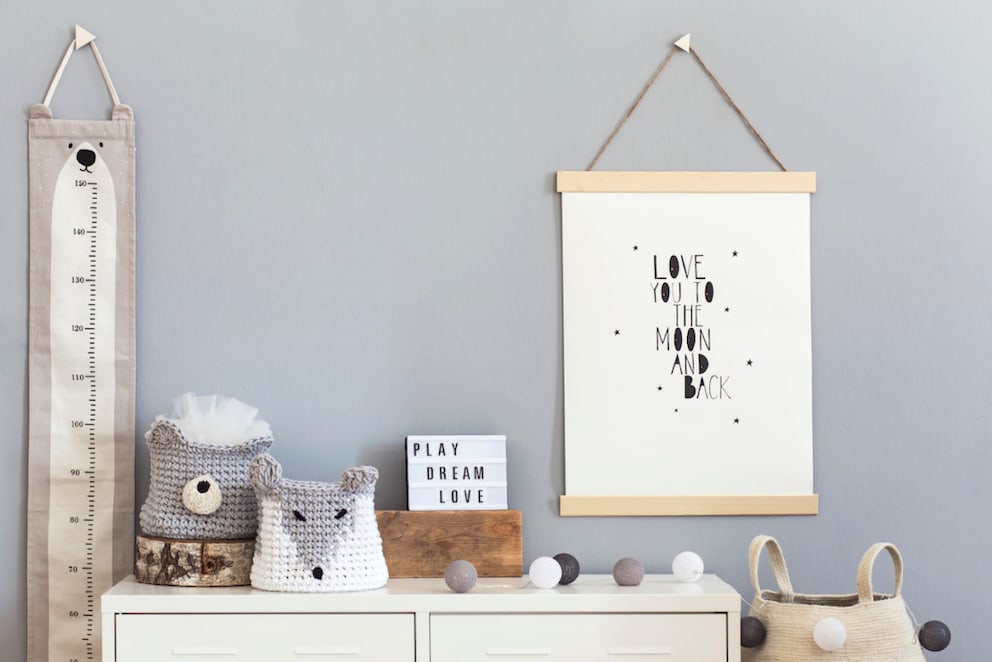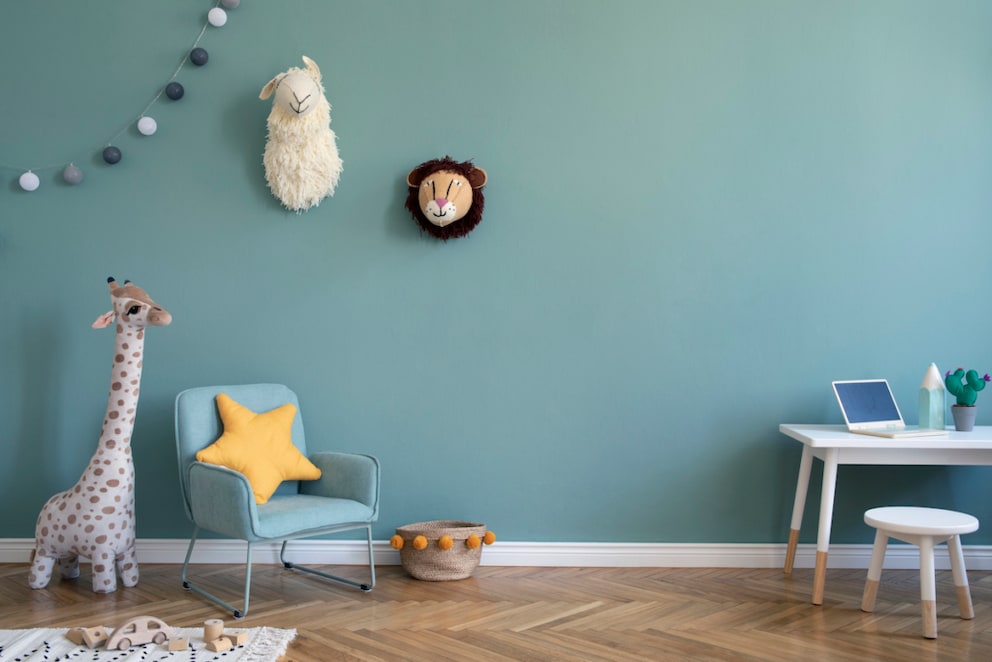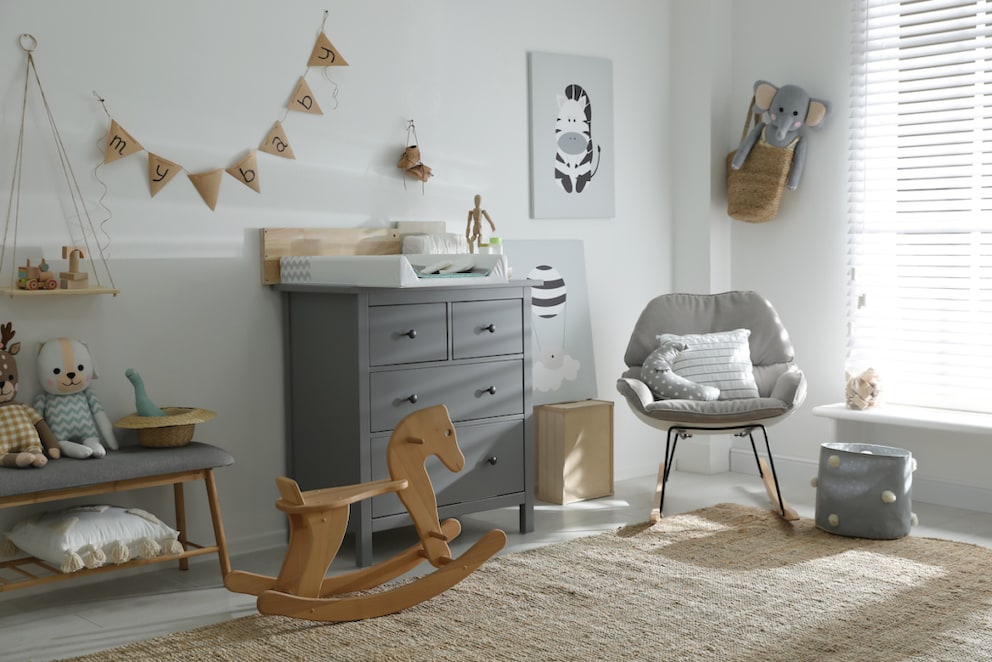January 3, 2024, 10:03 am | Read time: 4 minutes
Multifunctionality and (wild) animals will increasingly dominate children’s rooms in the coming year. Good camouflage meets neutral colors. Interior designer and myHOMEBOOK author Odett Schumann reveals what else parents and their little ones can expect.
The children’s room and all the furniture within it must constantly withstand special wear and tear. On a functional level, the furnishings should always keep pace with the child’s developmental stages. Not to forget the aesthetics: The design of a child’s room should not appear boring, nor should it be overwhelming. Ideally, the interior design serves as inspiration for the little one during play and learning. Manufacturers are increasingly aware of these demands and their responsibility, as is evident in the trends for children’s rooms in 2024.
Neutral Ambiance with Pastel Tones
The unisex style has finally arrived in children’s rooms and is essentially no longer a trend. Instead of clichéd pink and blue tones, it’s now primarily light natural tones and pastel colors that adorn the realm of the little ones. Neutral sorbet yellow, light gray, greige, mint, or lilac do not make the color disappear from the room. Even better: They bring more calm and serenity to the children’s room. Here and there, accents in neon colors, a bright red-orange, or rich ultramarine pop up. This adds dynamism and vibrancy to the space.
Playful Storage Solutions

What’s this? A basket that looks like an elephant, a mouse, or a fox? Playful storage solutions like these are increasingly common and should not be missing from any children’s room setup in 2024. Baskets, boxes, and containers are no longer just for storing all the toys; they now take on a playful character themselves. For parents, these prove to be not entirely selfless: Disguised as an apple, mushroom, or circus tent, tidying up in the evening becomes a playful task. Keeping things tidy almost becomes fun!
Tangible Sustainability
For years, children’s room furnishings inspired by nature and Scandinavian aesthetics have been trending. With a growing awareness of sustainability, ecological alternatives are increasingly chosen for the benefit of both the child and the environment. In 2024, this trend will expand further in children’s rooms: More furniture made from natural materials and toys made from recycled plastic will be part of the setup. Certified woods, rattan, cork, and linen meet environmentally friendly paints and finishes.
Also interesting: Setting up a Montessori-inspired children’s room
Additionally, a simple, organic design language combines with the idea of minimalism. Avoid having too many (useless) items in the room; instead, focus more on function and comfort. Knowing where raw materials truly come from and appreciating high-quality craftsmanship will become even more relevant in the future.
Joyful Monkey Business in the Children’s Room

Without its animal friends, the children’s room is clearly missing something. Whether as a beloved stuffed animal, a motif on the wall, or a storage basket–lions, penguins, and owls are trending in children’s rooms in 2024. Even if it seems like the zoo has broken loose, it’s a design idea that brings joy to both young and old. The room is bustling with domestic or even exotic companions. And along the way, children learn about the animal world in a playful manner.
The market supports the learning process by now offering everything from wall hooks to bunting to rugs in fun animal designs. And not only that: Other natural phenomena are increasingly being spotted in children’s rooms. In galactic realms, cloud lights and cushions shaped like moons and stars meet. Meanwhile, colorful rainbows adorn original wall hangings.

6 Children’s Room Trends for 2025

Children’s Room Trends for 2022

How to Turn the Children’s Bathroom Into a Cozy Haven
Modular and Growing Furniture
This trend for children’s rooms in 2024 is also inspired by a sustainable endeavor. Modular and growing furniture not only allows parents to respond more flexibly to their children’s development, but it also saves money. Although such furniture may initially seem expensive, it is an investment for the future. Children grow quickly, but constantly buying new furniture would be financially ruinous. With growing beds that fit from birth to elementary school age or height-adjustable desks, parents won’t have to worry about children’s furnishings for a long time.

Multifunctional furniture also proves to be resource-efficient. A changing table is often no longer a standalone piece of furniture but can simply be an attachment for a regular sideboard. Modular furniture in a neutral design is also practical, as it can be rearranged and expanded according to the child’s needs.


